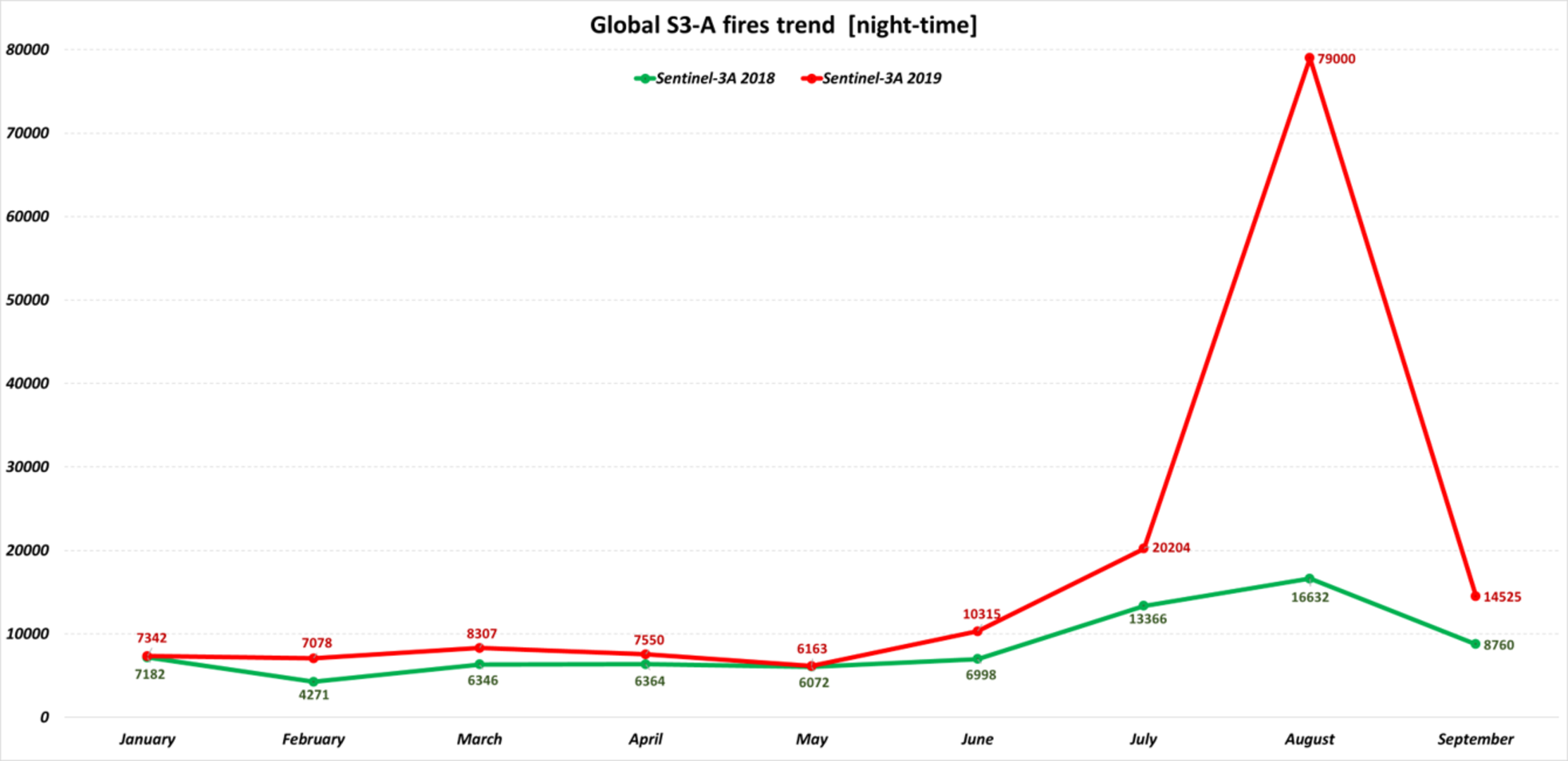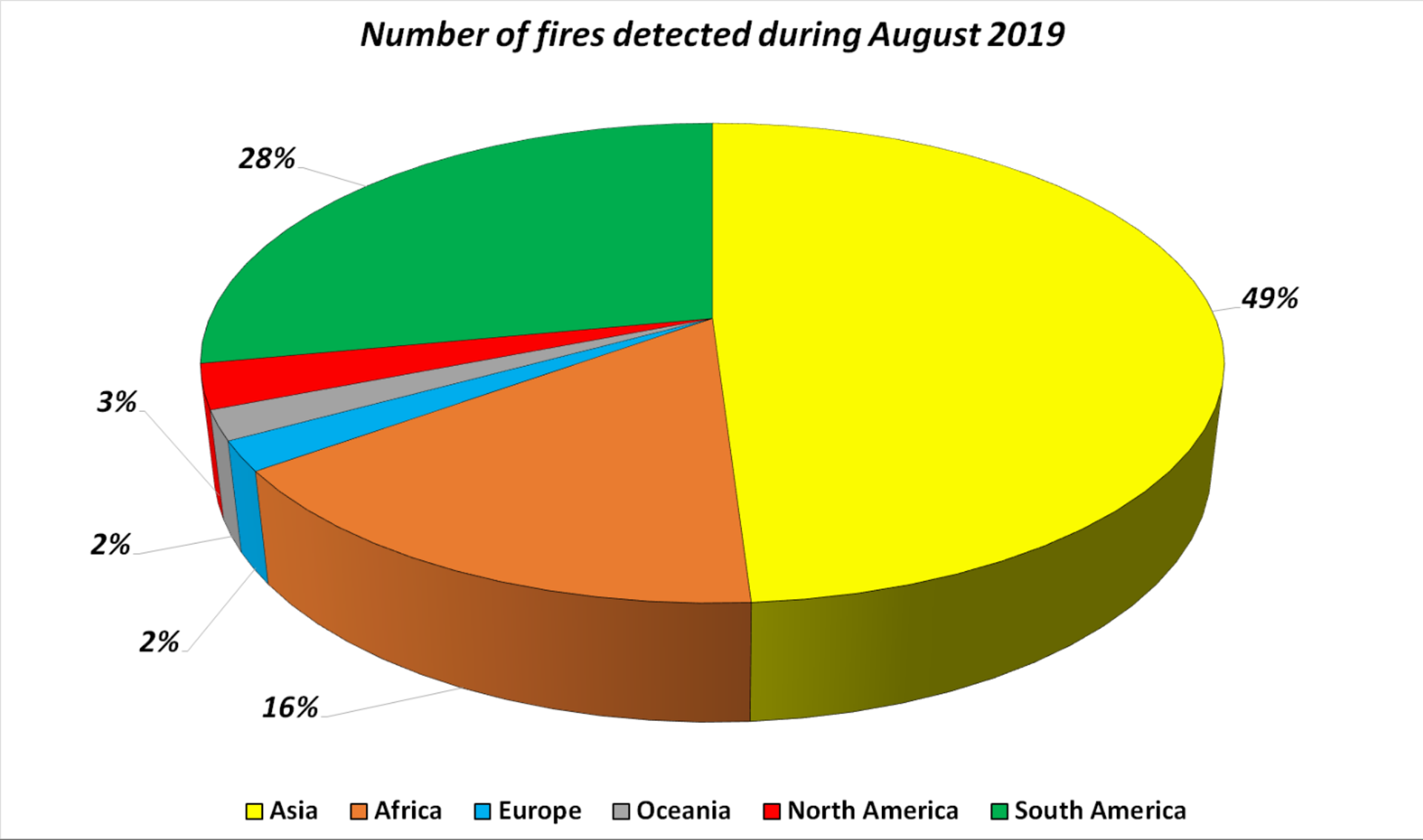Global S&T Development Trend Analysis Platform of Resources and Environment
| Is Earth on fire? | |
| admin | |
| 2019-10-25 | |
| 发布年 | 2019 |
| 语种 | 英语 |
| 国家 | 欧洲 |
| 领域 | 地球科学 |
| 正文(英文) | Wildfires have been making headlines again this month, with multiple fires burning in Lebanon and California, but these are just some of the many fires 2019 has seen. Fires in the Amazon sparked a global outcry this summer, but fires have also been blazing in the Arctic, France, Greece, Indonesia as well as many other areas in the world. Data from the Sentinel-3 World Fire Atlas shows that there were almost five times as many wildfires in August 2019 compared to August 2018, but a detailed analysis reveals precisely where these fires have been occurring – most of which were in Asia. The Copernicus Sentinel-3 mission recorded 79 000 fires in August this year, compared to just over 16 000 fires detected during the same period last year. These figures were achieved by using data from the Sentinel-3 World Fire Atlas Prototype, which is also able to provide a breakdown of these fires per continent. 
The data reveals 49% of fires were detected in Asia, around 28% were detected in South America, 16% in Africa, and the remaining were recorded in North America, Europe and Oceania. Working like thermometers in the sky, the sensors on satellites measure thermal infrared radiation to take the temperature of Earth's land surfaces. This information is used to detect and monitor the heat emitted by the fires. Using its two dedicated fire channels, the Sentinel-3 World Fire Atlas uses a simplified operational version derived from Wooster et al. 2012 in order to identify all active fires at night. 
Data gathered are used to plot the number of fires occurring monthly. The number of input images from Copernicus Sentinel-3A satellite were around the same from one year to the other. Even if the atlas cannot pick up all fires due to satellite overpass constraints and cloud coverage, it is statistically representative from one month to the other and from one year to the other. ESA’s Olivier Arino comments, “We have never seen an increase of wildfires of this kind since the ATSR World Fire Atlas was created in 1995.” Quantifying and monitoring fires is important for the ongoing study of climate because they have a significant impact on global atmospheric emissions, with biomass burning contributing to the global budgets of greenhouse gases, like carbon dioxide. One of the biggest problems during and after fires is obtaining an overall view of the fires evolution and potential damage. With fires seen from space, Earth observation is also being used to detect and monitor the active spots over affected areas. The prototype product and algorithm were presented at the remote sensing of forest fire EARSeL conference in Rome on 3 October 2019. |
| URL | 查看原文 |
| 来源平台 | European Space Agency |
| 文献类型 | 新闻 |
| 条目标识符 | http://119.78.100.173/C666/handle/2XK7JSWQ/216083 |
| 专题 | 地球科学 |
| 推荐引用方式 GB/T 7714 | admin. Is Earth on fire?. 2019. |
| 条目包含的文件 | 条目无相关文件。 | |||||
| 个性服务 |
| 推荐该条目 |
| 保存到收藏夹 |
| 查看访问统计 |
| 导出为Endnote文件 |
| 谷歌学术 |
| 谷歌学术中相似的文章 |
| [admin]的文章 |
| 百度学术 |
| 百度学术中相似的文章 |
| [admin]的文章 |
| 必应学术 |
| 必应学术中相似的文章 |
| [admin]的文章 |
| 相关权益政策 |
| 暂无数据 |
| 收藏/分享 |
除非特别说明,本系统中所有内容都受版权保护,并保留所有权利。
修改评论